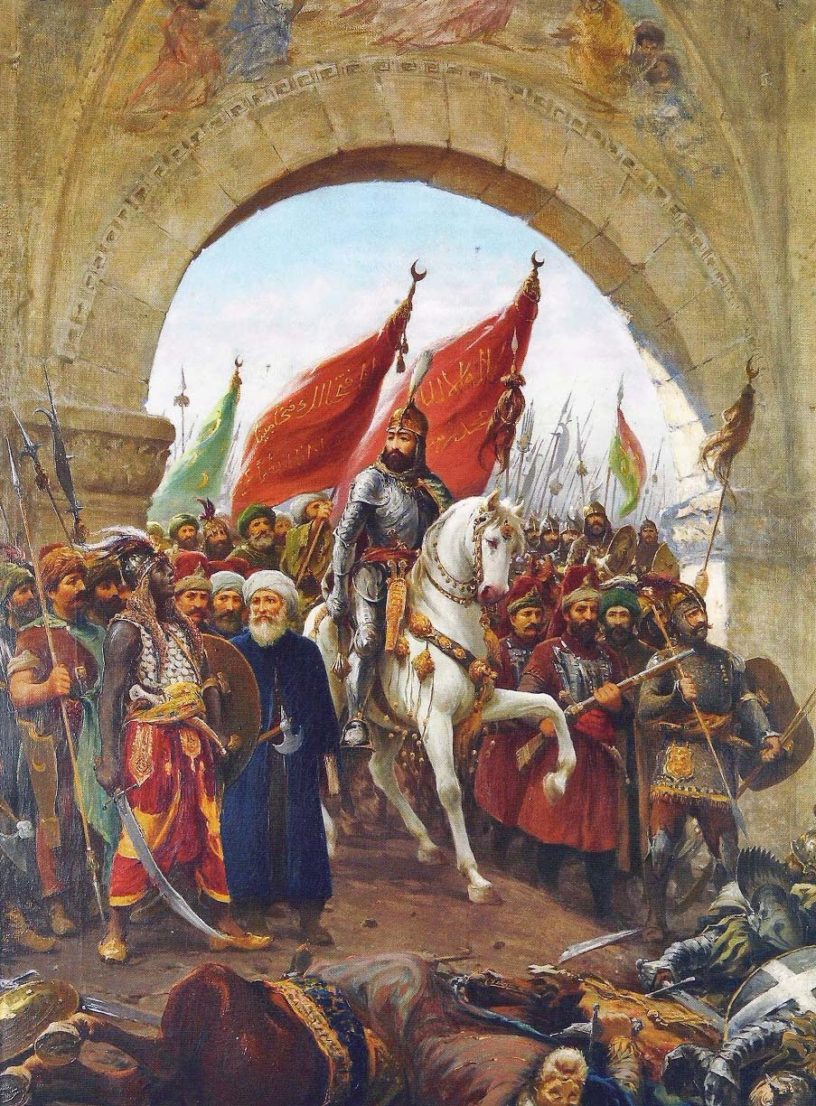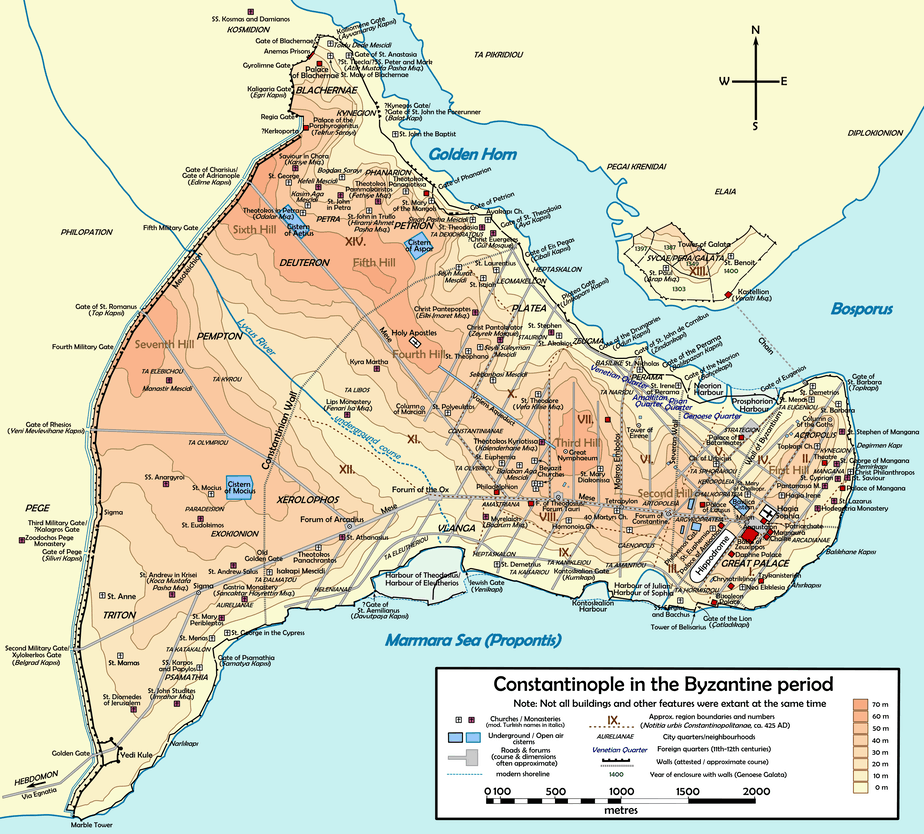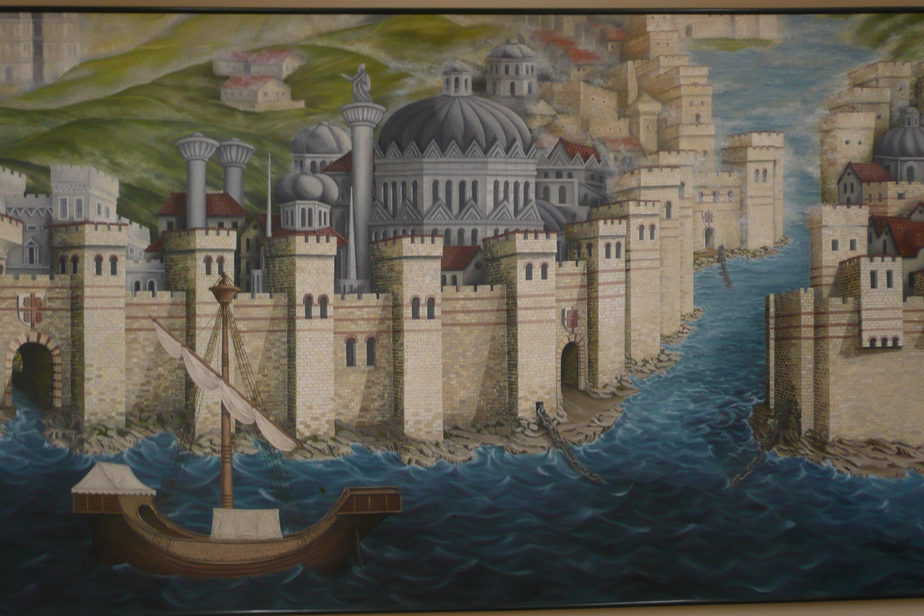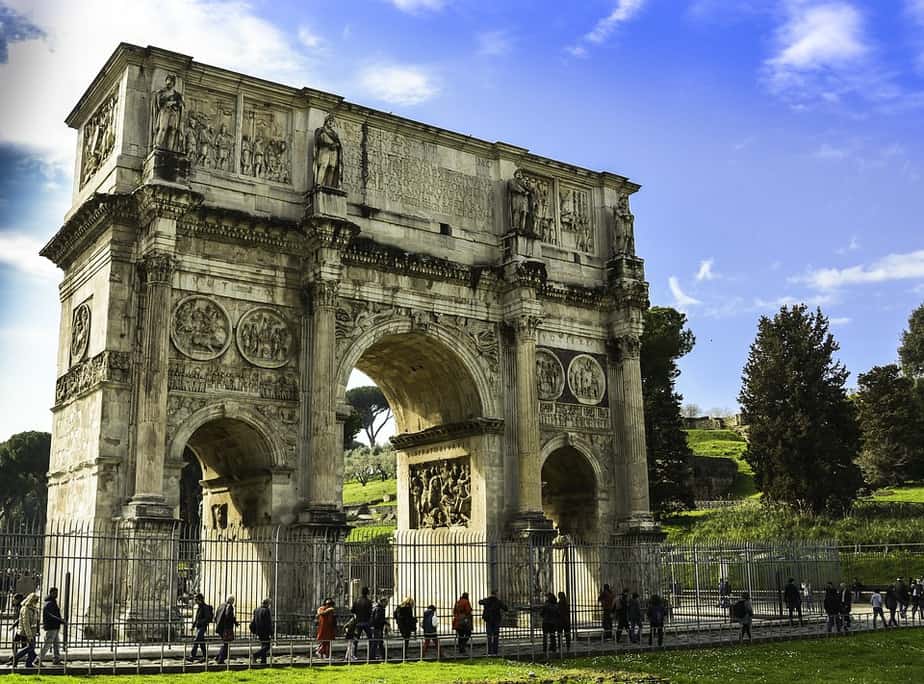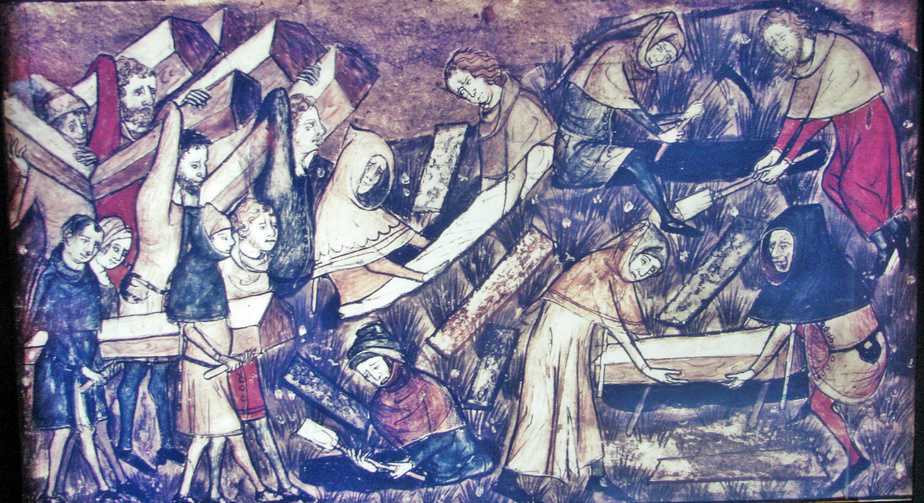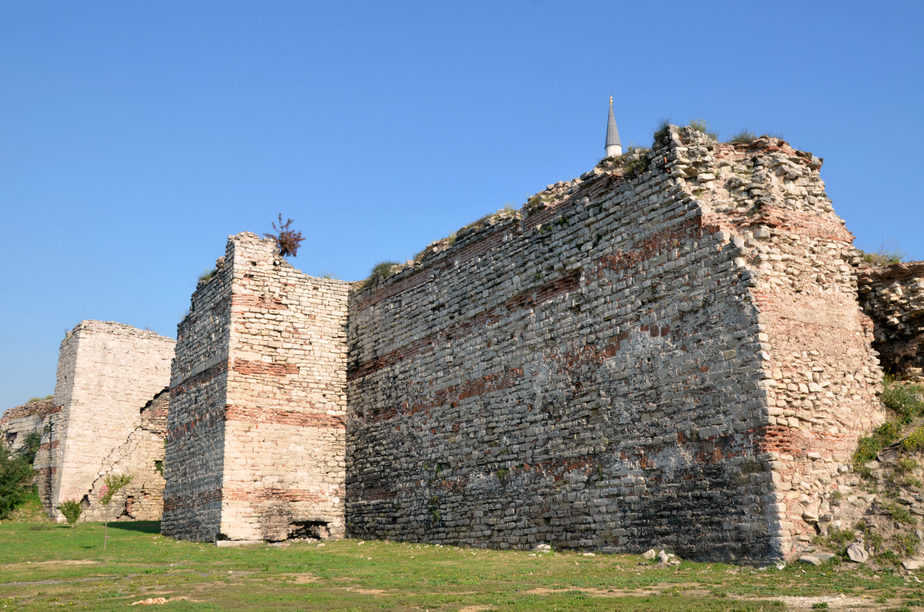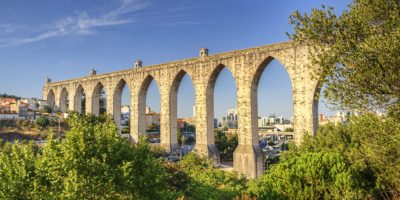Top 10 Facts about the Fall of Constantinople
Constantinople. Constantinople is the present-day Istanbul in Turkey. It was named Istanbul by the Ottomans after their conquest and also made it the capital of the Ottoman empire. Constantinople plays an important role in European history since it was a Christian metropolis settlement with immense wealth.
How and why did the mighty Constantinople fall, you ask? The Ottoman’s conquest of the Byzantine Empire on 29th May 1453 was the final blow to the Fall of Constantinople. The first crusaders in 1095 sparked the beginning of the fall of Constantinople since they needed to pass through the empire to capture Jerusalem from the Muslims and the Jews and after that, many others tried to bring down the empire without success.
The end of the Byzantine Empire in Constantinople was significant in the European economic and political sphere; it marked the beginning of the Renaissance Era, opened up Italy to attacks, and the cities of Venice and Genoa also declined due to its fall. Constantinople was known all over Europe as the best-defended empire in the world; mostly because of its strong walls, a massive army, and the famous Greek Fire. The city also boasted of a huge population which made it difficult to be attacked.
The Ottoman Empire, on the other hand, had developed to become a feared military empire and it had tried several times in the past to attack Constantinople. In the 1450s, they tried again, this time sure they would win because the Black Plaque had swept Constantinople leaving about 50, 000 people and a very lean defense system. The Ottoman Empire was an Islamic-run superpower that ruled over many parts of Europe and West Africa for over 600 years, and at its peak, it had Turkey, Greece, Bulgaria, Egypt, Macedonia, Hungary, Palestine, Jordan, Romania, Syria, Lebanon, a part of North Africa and Arabia under its rule! The leader Sultan Mehtet I led the siege of Constantinople.
Here are ten things you should know about this important time in history!
1.Who discovered Constantinople?
Before we look at the fall of Constantinople, lets first look at where it is and who lived or discovered the city. Constantinople was first founded around the 11th Century and was called the Lygos, which was later abandoned and the Greeks settled there at around 657 BC and named the place Byzantine.
Emperor Constantine in 324 left Rome and settled in Byzantine, an interesting port which joined Asia and Europe. He worked hard for six years after which he had made the city a business and entertainment hub; complete with institutions of learning, libraries, markets, public buildings, and a sports center. He even named the city ‘New Rome’ in 330, but it retained the name Constantinople. It was also one of the most fortified cities in the area!
2. Thriving port
Constantinople was a thriving port. That, and its geographical location is what made it popular; it is located between Europe and Asia! It was the capital of both the Ottoman Empire and the Byzantine empires. The capital was moved to Ankara and Constantinople was renamed Istanbul when the Republic of Turkey was founded in 1923.
The fall of Constantinople took place when the Ottoman Empire took over the city which was then the capital of the Byzantine Empire in 1423. Then, a siege that lasted for 53 days began, this also marked the end of the Roman Empire which had lasted 1,500 years!
3. It marked the end of the Middle Ages
According to many historians, the Middle Ages ended with the fall of Constantinople. The period was the end of the rule of the Byzantine Empire and the Roman Empire rule. When the Ottomans took over Constantinople, the inhabitants, the Byzantines fled to other European areas settling mostly in Italy; and with them, they took their knowledge of literature, art, theology, politics, science, architecture, philosophy, astronomy, music, and education among many others. they also took manuscripts from the libraries in the empire. The refugees’ knowledge in many areas piqued the interest of the Italians, therefore, the Renaissance period began.
One of the best libraries, the last one to fall and one which lasted almost a millennium was located in Constantinople- the Imperil library whose literary collections aided the Renaissance movement in Europe. Unfortunately, the library was destroyed in 1453 together with the city after it had survived a fire during the Sack of Constantinople in 1204. Sad.
4. It is now a historic site
Constantinople is now a UNESCO heritage site thanks to its very rich history, beautiful architecture, and culture. It was a very important place/ city in the European civilization- it was the home to the Roman Empire, the Byzantine Empire and even the Great Library is located there!
5. A big city it was
During the 10th century, the city is estimated to have had about 800,000 residents. At that time, the population of the world was relatively low so having this number of people in one city meant the city was kind of a big deal! One of the things that greatly weakened Constantinople was the Black Plague together with warfare, which reduced the population of the city to about 50,000 people! That was devastating!
6. A divided Christianity
There was a massive divide between the Catholics and the Orthodox churches at the time. This was fueled by the killing of Latins and this war between the two went on for very many years. At this point also in Europe, there was an attempt to drive out the Muslims in the name of Christendom. Because of the friction between the Latin Catholics of the West and the Orthodox Christians of the Byzantine Empire in the East, a massacre took place where the Latins were killed in great numbers.
7. The walls still stand
Most of the walls of Constantinople city still stand today! Even though the missing part of the wall was restored in the 20th Century, an earthquake destroyed that part and left the old part – the Theodosian wall standing! it seems the workmanship those days was strong. These walls were also an amazing piece of architecture. They were incredibly strong and extremely high- they were 12 meters high, which was unusual during those days. This explains why the city was always well protected!
8. The Nika Riots
Just as the world is today, back in the day, sports were a powerful thing, even politics influenced sports in some way. Now, the chariot racing sport became such a phenomenon in Constantinople that there were divided fans, forming the Blue and the Green sides. During a particular race, the blue and the green teams clashed in a riot which resulted in the then Emperor Justinian I executing the supporters. He also demanded very high taxes which angered the senators from the two sides. This did not end there, and this is where the Nika Riots came in; the senators from the two factions rallied up the supporters of the teams during one of the tournaments seeking to dethrone Justinian I and they even looked for a replacement for him. The two teams, chanting ‘Nika’ meaning ‘Victory’ made demands to the emperor who at the time was watching the riots from his palace! The emperor wanted to flee but his wife persuaded him to stay and pitch the two teams against each other which he did and got his revenge on them, by killing the senators and the man who wanted to dethrone him!
9. Not taking the fall lying down!
The defenses around the city were something else! Even before the fall of the city, many people, troops, and kingdoms tried but failed! At some point, the city used the famous Greek Fire that could burn in water; it was used by Muslim Arabs troops who were attacking them from the sea. The Byzantine Empire’s Greek Fire had a closely guarded secret component and gave them an advantage over the enemy! They used this to scare away the enemy and it is said they had a nozzle which they used to blow the fire to the enemy!
10. A bizarre open gate!
Imagine being in battle, holding off the enemy successfully for close to two months, and then being surprised to see the enemy walking comfortably through a gate into the city. Well, someone forgot to close the Kerkoporta gate, or rather just left the gate to the city open, which opened up the city of Constantinople for the Ottomans to breeze through!
The Ottomans, led by Sultan Mehmed II’s had been attacking the well-guarded city with his 100 ships and over 200, 000 soldiers. Even though the army was big and strong against the few people in the city, the Constantinople team was doing so well until the open gate incident which saw the Ottomans kill Emperor Constantine XI, his troops, it saw the people killed and the ones who remained were enslaved. That was in 1453.
That was the fall of the mighty Constantinople!
Planning a trip to Paris ? Get ready !
These are Amazon’s best-selling travel products that you may need for coming to Paris.
Bookstore
- The best travel book : Rick Steves – Paris 2023 – Learn more here
- Fodor’s Paris 2024 – Learn more here
Travel Gear
- Venture Pal Lightweight Backpack – Learn more here
- Samsonite Winfield 2 28″ Luggage – Learn more here
- Swig Savvy’s Stainless Steel Insulated Water Bottle – Learn more here
Check Amazon’s best-seller list for the most popular travel accessories. We sometimes read this list just to find out what new travel products people are buying.

